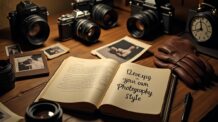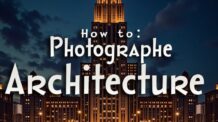Shooting in low light can be one of the most challenging — and rewarding — aspects of photography. Whether you’re capturing a moody street scene at night, an intimate indoor portrait, or a concert, low light photography allows for rich atmosphere and emotion.
But without a flash, you’re working with limited light — which means you need to rely on camera settings, technique, and creativity to get sharp, well-exposed images.
In this article, you’ll learn how to take better low light photos using only available light, whether you shoot with a DSLR, mirrorless camera, or smartphone.
Understand the Challenges of Low Light
Low light photography often means:
- Slower shutter speeds, which can cause motion blur
- Wider apertures, which reduce depth of field
- Higher ISO, which can introduce noise
- Autofocus difficulty, especially with older cameras
But when handled well, these challenges can turn into creative strengths.
1. Use a Wide Aperture
The wider your aperture (smaller f-number), the more light reaches your sensor.
- Shoot with f/2.8, f/1.8, or even f/1.4 if your lens allows
- A wide aperture also gives you beautiful background blur (bokeh)
- Be mindful of shallow depth of field — focus carefully, especially for portraits
If you’re using a zoom lens with a variable aperture, consider switching to a prime lens, which usually performs better in low light.
2. Slow Down Your Shutter Speed (Carefully)
Slower shutter speeds let in more light — but also risk motion blur. The key is finding a balance.
- Use 1/60s or slower if your subject is still
- For handheld shots, try to keep shutter speed equal to or faster than your focal length (e.g., 1/50s for a 50mm lens)
- Use burst mode to increase the chance of getting a sharp frame
For static scenes (landscapes, architecture), use a tripod to shoot even at 1 or 2 seconds without blur.
3. Raise Your ISO (Smartly)
ISO boosts your camera’s sensitivity to light — helpful in dark scenes. But higher ISO can add noise (grain).
- Start at ISO 800 or 1600 and go up as needed (modern cameras can handle ISO 3200–6400+ quite well)
- Shoot in RAW to reduce noise during editing
- Use noise reduction tools in Lightroom, Capture One, or your camera’s built-in software
Don’t be afraid of noise — a sharp, slightly noisy image is better than a clean, blurry one.
4. Use Image Stabilization
Many modern cameras and lenses come with in-body or optical image stabilization (IBIS or OIS).
- Stabilization helps you shoot at slower shutter speeds handheld, especially for still subjects
- Combine with good hand-holding technique: tuck your elbows in, hold your breath, and gently press the shutter
This is especially useful in situations where tripods aren’t practical.
5. Find or Create Available Light Sources
Use light that already exists around you:
- Street lamps
- Neon signs
- Candles or string lights
- Phone screens or computer monitors
- Reflected light from nearby buildings or walls
Get creative with angles. Even a small light source can create dramatic lighting if used close to the subject.
6. Manually Focus When Autofocus Fails
In dark environments, your camera might struggle to autofocus. If so:
- Use manual focus with focus peaking (if available)
- Use live view zoom to manually fine-tune focus
- Focus on areas with contrast (like eyes, edges, or light spots)
Practicing manual focus improves your control in tricky lighting.
7. Use Your Histogram and Exposure Meter
Your LCD screen might mislead you in low light. Trust your histogram to avoid underexposing or blowing out highlights.
- Aim for a balanced histogram with no major clipping
- Slight underexposure is okay — you can brighten in post if shooting RAW
Avoid underexposing too much or you’ll introduce noise when lifting shadows later.
8. Embrace the Mood
Low light doesn’t mean you have to make it look like daylight. Embrace the mood and mystery:
- Let shadows stay dark
- Highlight only part of your subject
- Use contrast and minimalism
- Play with silhouettes and rim lighting
Moody low light photos can be more impactful than brightly lit ones.
9. Edit Thoughtfully
Editing helps you bring out detail and correct issues without a flash.
- Increase exposure slightly if needed
- Adjust white balance for natural skin tones
- Use noise reduction tools (but not too much — keep texture)
- Add contrast or clarity to enhance sharpness
- Use selective dodging and burning to emphasize your subject
Editing is where your low light shots really come to life.
Final Thoughts
Low light photography without a flash challenges you to think differently. It teaches you how to use the available light, master your camera settings, and make creative choices that enhance emotion and mood.
With patience and practice, you’ll start to see darkness not as a limitation — but as a canvas for storytelling.




Deixe um comentário